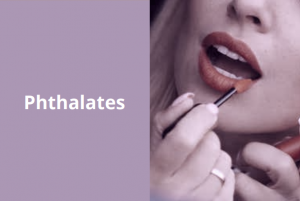 This webpage provides background information on the HBM4EU substance group phthalates. It provides information on the use and hazardous properties of substances in the group, as well as summarising existing evidence of human exposure to phthalates in Europe.
This webpage provides background information on the HBM4EU substance group phthalates. It provides information on the use and hazardous properties of substances in the group, as well as summarising existing evidence of human exposure to phthalates in Europe.
It also summarises the legislative status of phthalates in the European Union, as well as at the national level in European countries.
Open policy questions regarding substances in the phthalates group are listed. These questions guide work on phthalates under HBM4EU.
The main authors of the scoping document are Chemical Substance Group Group Leaders Marike Kolossa Gehring and Rosa Lange of the German Environment Agency. The scoping document on phthalates was last updated in December 2020.
Click here to read the updated overview report that was produced at the end of 2020 and answers the main policy questions with the available data at the time.
A number of communication products have been developed for Phthalates, such as the policy brief, infographic, factsheet, substance report and video.
Phthalates (also named phthalate esters or esters of phthalic acid), and their substitute Hexamoll® DINCH®, are a group of plasticizers with a production volume of millions of tons per year. They are widely used in the manufacture of plastics, to make them soft and flexible, and in personal care products. They can be found in common products such as soaps, sun tan lotion, soft plastic toys, plastic bottles, raincoats, shoes and food packaging. Due to their endocrine disrupting properties, some phthalates have been assigned use restrictions since the late 1990s. There is societal concern due to their toxicity to reproduction and presence in biological matrices of humans with Greenpeace (Greenpeace, 2006) having conducted several studies addressing phthalates in consumer products and the potential health effects emerging from its endocrine disrupting effects in the early 2000s. Substances included in the substance group, were listed according to availability of toxicology and human biomarker data, in category A, B, C, D or E substances based on the Prioritisation Strategy and criteria elaborated under WP4, Year 1 (Deliverable 4.3 – Prioritisation Strategy Criteria) DEHP, BBzP, DnBP, DiBP, DEP and DiNP were categorised as Category A substances since HBM data is available for at least one country from one of the four geographical regions of the European Union defined by the UN. Furthermore, for all substances well-established analytical methods exist and all substances, except DEP are regulated. DEP and DiNP are the only ones in this category which are not classified as toxic for reproduction 1B. However, Denmark suggested to classify DiNP as toxic for reproduction 1B. DiDP, DnOP, DMP, DnPeP, DCHP, DPHP, Hexamoll®DINCH® were categorised as Category B substances since HBM data is available for some countries, but lacking for at least two of the four geographical regions of the European Union defined by the UN. For most of the substances established analytical methods are available, but might need to be quality assured and/or harmonised. Currently, the metabolites for DPHP and DiDP cannot be distinguished and improvement of analytical methods are needed. Three of these phthalates are regulated and two are currently under evaluation for ED properties. DiPeP, DHNUP, DMEP and DnHP were categorised as Category C substances, since only little HBM data exists. Methods only exists to measure DHNUP and further research on metabolism and feasibility of method development are needed. However, all substances are classified as toxic to reproduction 1B and three of four are on the authorisation list, with DnHP being recommended for inclusion to this list. Not all countries have human biomonitoring data on phthalates were investigated in the human biomonitoring DEMOCOPHES study. With only 7 countries analysing 5 phthalate metabolites (from a list of 20). Since phthalates are not chemically bound to the (plastic) materials, they can leach, migrate or evaporate into indoor air and atmosphere, foodstuff or other materials and so are of ubiquitous presence in the environment (Heudorf et al. 2007). Phthalates, more specifically orthophthaltes are the most commonly used plasticers globally with an annual consumption of 8.4 million tons. Orthophthalates are made of alcohols with long alkyl chains and 1 million tons of orthophthalates are produced each year in Europe, which represent 80 % of the plasticiser market. Depending on their molecular structure, they can be differentiated into low molecular weight orthophthalates (LMW) and high molecular weight (HMW) with different physico-chemical properties resulting in different applications. The majority of HMW are used in flexible polyvinyl chloride (PVC) products such as flooring, wires and cables, sport equipment, toys, coated textiles, footwear, synthetic leather and others. DEHP is also used in PVC medical devices (Koch & Angerer, 2011). HMW phthalates include: The LMW phthalates are more volatile and have plasticising and solvent-like properties. Therefore they have various other applications in addition to PVC products such as gelling plasticizers, paints, dispersions, and adhesives, but also as solvents in insect repellents (DMP) and in cosmetics (DEP). They comprise of: DEP and DnBP are also used in enteric-coated tablets/capsules as enteric film-coating materials or matrix binder (Wittassek, 2011). Hexamoll® DINCH®, due to its low toxicity and low migration rate, is used in soft PVC-containing medical devices such as blood bags, in food contact materials, such as artificial wine corks, in sports equipment and textile coatings, in wallpaper, paints and inks, adhesives and in cosmetics and toys. In the latter, Hexamoll® DINCH® is thought to be the most used plasticiser alternative. However, DnBP, DIBP, BBzP, DEHP, DMEP, DnPeP, DiPeP are generally not allowed to be placed on the EU-market, when used as individual substances or in mixtures for supply to the general public when concentration limits are equal to or exceed 0,3 %. In addition, DEHP, DnBP, BBzP, DEMP, DnPeP, DiPeP and DHNUP are prohibited for use in cosmetics in the European Union. Consumer articles from outside EU/EEA (e.g. Asia or USA) can contain phthalates since there is no such strict regulation for the use of phthalates in consumer articles in every country. China has in recent years enacted restrictions of certain phthalates in toys and food contact materials. Nevertheless, it has been shown that restricted phthalates are found in a high number of products imported into the EU and had mostly unknown origin or were imports from China (ECHA, 2018). Plasticizers can be taken up by ingestion, inhalation and dermal contact. Whereas for HMW phthalates the main source of exposure is via food originating from contamination, e.g. via food contact materials (Wittassek et al. 2011), especially for DEHP but also for DiNP, the exposure to LWM phthalates from food contribute to the overall exposure to a minor degree (Koch & Angerer, 2011, Bundesgesundheitsblatt). Inhalation of indoor air, exposure via ingestion of house dust by children and dermal contact with articles and dust can also be sources of exposure, especially for the short chain phthalates. Fromme et al., 2013 found significant correlations between phthalate concentrations in dust samples and urinary levels of DnBP, BzBP, but also for DEHP. In addition, medical treatment can lead to high exposure towards certain phthalates. For example, an exposure source for DEHP can be medical devices, such as tubes in blood transfusion. Long-term treatment with enteric-coated tables/capsules can lead also to high exposure of DEP and DnBP. Levels found in children at least in Germany have in the past been so high that an impact on health could no longer be excluded with sufficient probability. In regard to occupational exposure there is only limited data on the exposure of workers to different phthalates in the plastic industry. Also, phthalate use in the industry has changed dramatically during the past decade due to regulatory Several human-biomonitoring studies in the EU, US and Asia were conducted, showing that the ubiquous use of phthalates lead to a continuous internal exposure of the general public. Phthalate metabolites are being detected in a high percentage of the study population, sometimes present in each urine sample investigated (Berman et al., 2013; Huang et al., 2016; Koch et al., 2017; Ye et al., 2008;). Comparison of exposure estimates between studies from the DEMOCOPHES project revealed a clear age difference. Levels of metabolites were in general higher in children than in mothers, which is confirmed also by other studies (ECHA, 2016; Hartmann et al., 2015; Frederiksen et al., 2013; Becker et al., 2009; Geens et al., 2014). The relative metabolite levels differed among countries, with Swedish children having higher urinary MBzP levels than the European average, Slovak children having two times higher concentrations of DEHP metabolite levels than the European average and Polish children showed highest levels of MnBP and MiBP. In Spain, average MEP levels were six times higher than the European average. However, exceedance of health-based guidance values, in particular HBM-I values and BE values, were only reported for few cases, i.e. for DEHP metabolites in mothers and children (Den Hond, 2015). Furthermore, results of some of the above-mentioned studies also suggest, that exposure to high levels of one phthalate metabolite is positively correlated with high exposure of one of the other phthalate metabolite (ECHA, 2016; Becker et al., 2009; Frederiksen et al., 2013). However, this cannot be confirmed by results of the DEMOCOPHES study (Den Hond et al., 2015). In the Restriction Report of ECHA (2016) risk characterisation ratios (RCRs) for the health of the general public were calculated based on DEMOCOPHES data revealing that in 13 out of 15 Member States of the EU RCRs for combined 95th percentile exposure for DEHP, DnBP, BBzP and DiBP are at or above 1 for children (ECHA, 2016). This stresses the fact, that cumulative risk assessment is crucial to accurately determine the hazards originating from phthalates exposure. Since endocrine active phthalates can act in a dose additive manner and humans simultaneously are exposed to multiple phthalates, cumulative exposure to phthalates might exceed health-based guidance values and therefore pose a risk to the public health. Nonetheless, phthalate use in the industry and in the consumer environment has changed dramatically during the past decade due to regulatory restrictions. Recently, Koch et al., investigated the time trend of phthalates exposure using urinary samples from the German Environment Specimen Bans (ESB) regularly taken in the time frame of 1988 until 2015. They showed that the exposure to old, well-known and restricted phthalates (DEHP, DnBP, BBzP) has decreased. When comparing DEMOCOPHES data to older studies, a significant decline in exposure was also seen for Germany and Denmark (ECHA, 2016). Exposure to the metabolites of the substitutes Hexamoll® DINCH® has increased in Germany and in Sweden (Koch et al, 2017; Gyllenhammar et al., 2017). The population may also be significantly exposed to newer phthalates like DiNP and DPHP and one can assume that the European population will still be exposed to restricted phthalates in the future, e.g. due to long lifetimes of articles, recycled PVC and from remaining authorised uses or uses that are not restricted. Concerning occupational exposure there is only limited data on the exposure of workers to different phthalates in the plastic industry, but the same trends as for consumers are considered relevant. Phthalates can cause a variety of adverse effects in humans and in laboratory animals (Koch and Calafat 2009, Mariana et al. 2016) of which the most prominent are the endocrine disrupting and reproductive effects. It has been shown that some phthalates, such as di(2-ethylhexyl) phthalate (DEHP), butylbenzyl phthalate (BBzP), di-n-butyl phthalate (DnBP), and di-iso-butyl phthalate (DiBP) induce the so-called phthalate syndrome already at low doses, which covers different reproductive abnormalities in male offspring of rats exposed during pregnancy with the critical time window of gestation day 15-17. The effects of phthalates are, among others, malformations of the testes, epididymides and Gubernaculum Testis, cryptorchism, hypospadias, reduced semen count and others caused by interference of the development of fetal Leydig cells, reduced or inhibited testicular testosterone production and reduced production of insulin-like 3 peptide hormone (HBM Commission, 2011). Not all phthalates exhibit the reprotoxic and developmental effects described above and not all have the same endocrine disrupting potency. It seems that the molecular structure of the alkyl side chain is responsible for the exhibition of the effects, i.e. limited to phthalates with 3-7 (or 8) carbon atoms in the backbone of the side chain only. The most potent representative is di-n-pentyl phthalate (DnPeP), followed by DEHP, DnBP, DiBP, BBzP, and dicyclohexyl phthalate (DCHP) with a comparable potency. Di-iso-nonyl phthalate (DiNP) has a somewhat lower potency to act as an endocrine disruptor (Gennings et al. 2014). It must be assumed, that similar adverse effects are also caused in human, since the effects of the phthalate syndrome in rats have similarities with the observed testicular dysgenesis syndrome in humans (HBM Commission, 2011). In addition, several epidemiological studies conjecture an association between phthalate exposure and overweight, insulin resistance, asthma, attention deficit disorder and attention deficit hyperactivity disorder (Hatch et al., 2010; Engel et al., 2010; Wang et al., 2015, Franken et la., 2017). In terms of risk assessment it is important to note that mixtures of the above mentioned phthalates have direct additive effects (Howdeshell et al. 2017), but also additive effects with other endocrine disrupting chemicals has been demonstrated, even though they function via a different mode of action (Gray et al., 2006; Rider et al., 2010). Due to increased knowledge of the endocrine disrupting effects of the above mentioned phthalates, less harmful plasticisers became more important over the last decade including di(2-propylheptyl) phthalate (DPHP) and Hexamoll® DINCH®. DPHP due to its molecular structure is thought to have no anti-androgenic effects, but only minimal data is available. Hexamoll® DINCH® was introduced into the market in 2002 as a substitute mainly for DEHP and DINP. In the course of human biomonitoring of phthalates, the concentration of the degradation products (metabolites) are commonly analysed in urine due to its non-persistent nature, since urinary concentrations of the compounds and their metabolites are usually higher than in blood. After exposure, phthalates rapidly metabolised and are completely excreted within 24 hours (Wittassek, 2007). Therefore, it is important to have comprehensive knowledge on the metabolism of the respective compound. LMW phthalates are generally determined via their primary monoester metabolites, whereas HMW phthalates are determined via their oxidised metabolites. The longer the alkyl side chains are the stronger is the oxidative modification of the monoester. Therefore, the LMW phthalates are excreted mainly as their monoesters and to a lesser extent as their oxidative metabolites. The HMW are excreted mainly as their oxidative metabolites and to a lesser extent as their simple monoesters. For some monoesters, e.g. MnBP, MiBP, MEHP and MiNP an internal and external contamination control is warranted. Due to the omnipresence of phthalates and usage in laboratory equipment external contamination of the sample with the parent compound or their monoester can occur. Biodegradation can lead to the contamination of the samples with monoesters, since they cannot be distinguished from the monoester that indicate the body burden. HMW phthalates as DiNP and DiDP are challenging due to their presence in different isomers. Separation of the isomers is difficult and experience is needed to identify the various isomers in the chromatogram. Following on the Advisory Board’s advice to strengthen the science-policy interface, HBM4EU developed a strategic and systematic approach to outreach and align science and policy. A legislative mapping exercise was done by RPA Consultants, providing relevant public policy processes that may benefit from the knowledge generated under HBM4EU. The documents are available for consultation here, with the tables presented here. DEHP, DnBP, DiBP, BBzP, DnPeP, DiPeP, DHNUP, DnHP and DMEP are classified as reproductive toxicants category 1B under Annex VI to the Classification Labelling and Packaging (CLP) regulation (EC 1272/2008). In addition to their reprotoxic properties, DEHP, DnBP, DiBP, and BBzP also have endocrine disrupting properties and have been classified as substances of very high concern (Annex XIV EC 1907/2006) and therefore included in the candidate list for the inclusion in Annex XIV of the REACH regulation (Annex XIV of REACH EC 1907/2006). Four of the nine above mentioned phthalates are already subject to authorisation (Directive (EU) 2015/863), namely DEHP, BBzP, DiBP and DnBP. Since February 2015 they must not be used within the European Union without authorisation. Applications for authorisation were submitted for DEHP and DnBP only. There are Commission decisions on some authorisations, others are currently under evaluation. In addition, DiNP, di-n-octyl phthalate (DnOP), DiDP are restricted for all children’s toys and childcare articles that can be placed in children’s mouth with a concentration limit of 0.1 % by entry 52 of Annex XVII to REACH. However, imported goods do not come under the authorisation requirement. Since June 2017, three other phthalates are included in the Authorisation List: DiPeP, DMEP and DnPeP with a sunset date of July 2020. Reprotoxic substances, such as DEHP, BBzP, DnBP, DIBP, DnPeP, DiPeP, DCHP, DHNUP, DnHP and DMEP are generally not allowed to be placed on the market, in the EU as individual substances or in mixtures for supply to the general public when concentration limits are equal or exceed 0,3 %. Furthermore, the use of DEHP, DnBP, DiBP and BBzP is restricted in plasticised materials of all toys and childcare articles with a concentration limit of 0.1 % by entry 51 of Annex XVII to REACH. In addition, DiNP, di-n-octyl phthalate (DnOP), DiDP are restricted for all children’s toys and childcare articles that can be placed in children’s mouth with a concentration limit of 0.1 % by entry 52 of Annex XVII to REACH. Current efforts for a further restriction of DEHP, DnBP, DiBP, and BBzP have been initiated by ECHA in the form of an Annex XV restriction dossier in April 2016 and is now up for decision by the Commission. If decided upon positively the restriction in articles will take effect probably 2020 or 2021. Certain phthalates have specific migration limits (SMLs): Other product-specific legislation which regulate certain phthalates include: Exposure characteristics Monitoring the success of existing policy actions and assessing the needs for further regulation 7a) Had the restriction under REACH the favourable impact, that is a reduction of GM/median concentrations of the already restricted phthalates (DEHP, BBzP, DnBP, DiNP, DiDP, DnOP), especially for children from 2007 until today (2018-2021)? 7b) Was the introduction of the Authorisation obligation under REACH effective enough to protect European citizen? Is there a sufficient decrease of the Cat. A substance levels subject to authorisation (GM/median) in the European population (general/children?) from year 2015 until today (2018-2021) (i.e. DEHP, DnBP, DiBP, BBzP)? Are there differences between countries? 7c) Had the identification as SVHC already an impact on the reduction of the phthalate exposure of the population (i.e. Did the exposure of a certain substance decline after the substance is identified as SVHC)? Impact on human health Usage of HBM4EU results for policy making In the interest of transparency and accountability, HBM4EU invites interested stakeholders to submit comments on the scoping document. All submitted comments will be made available for download on this webpage and will be taken into consideration by the HBM4EU consortium, where possible. Please click here to submit your comments. Please click here to access the Substance Report.
restrictions, which means, that the exposure to old, well known phthalates (DEHP, DnBP etc.) in the industry has decreased . However, the workers may be significantly exposed to newer
phthalates like DiNP and DPHP or substitutes like DINCH®.
Nevertheless, one can assume that people in Europe will be exposed to restricted phthalates in the future e.g. due to imports of plastic products.
For most of the phthalates discussed here, a solid mass spectrometry method exist. However, until today there is no method available that can distinguish between DPHP and DIDP metabolites since they have the same molecular mass and similar retention times in HPLC (high-performance liquid chromatography). DPHP metabolites can be determined separately using a GC-MS method. Hexamoll® DINCH® metabolites can be measured using a LC-MS/MS but an external quality assessment scheme is currently not available. No or insufficient methods exist for DiPeP, DMEP and DHNUP.
Disclaimer
The HBM4EU project was launched in 2016 with the aim of improving the collective understanding of human exposure to hazardous chemicals and developing HBM as an exposure assessment method. The project had €74m in funding and jointly implemented by 120 partners from 28 participating countries – 24 EU member states plus Norway, Switzerland, Iceland and Israel and the European Environment Agency. One of its aims was to ensure the sustainability of HBM in the EU beyond 2021. The project ended in June 2022. The website will not be updated any longer, except the page on peer reviewed publications, but will be online until 2032.


